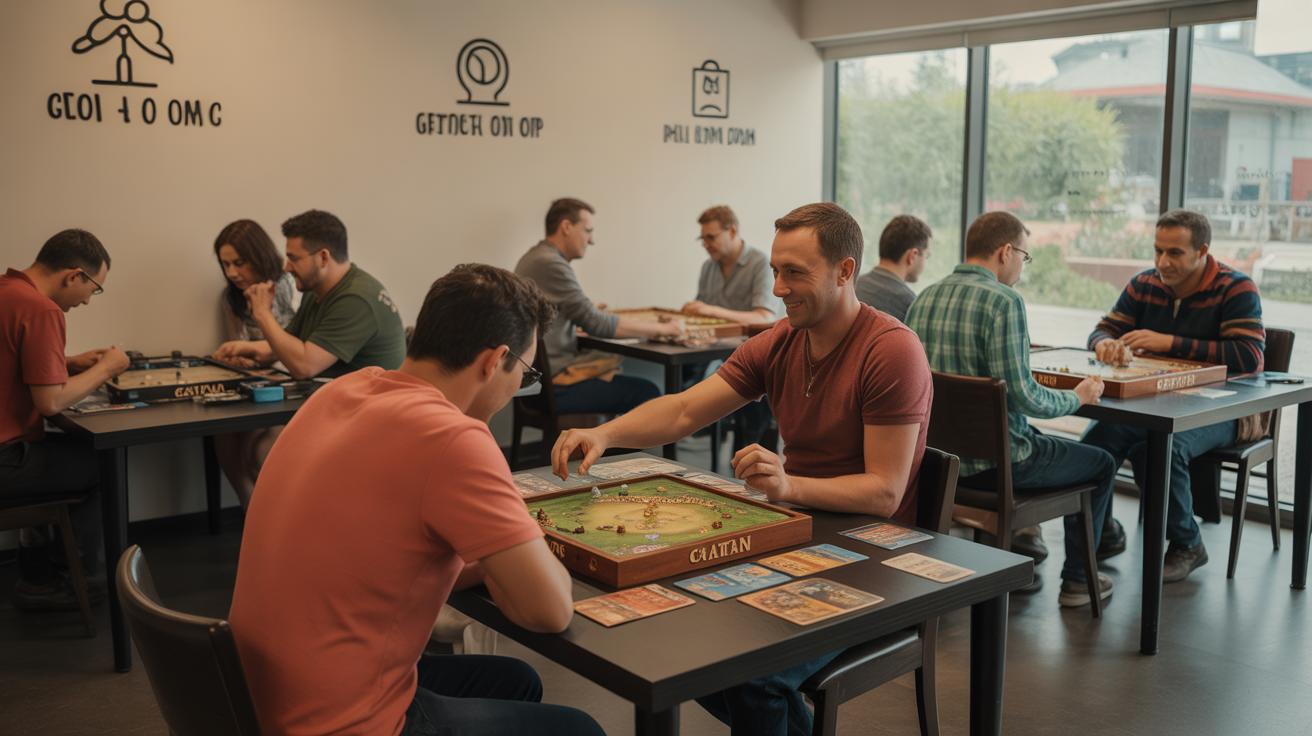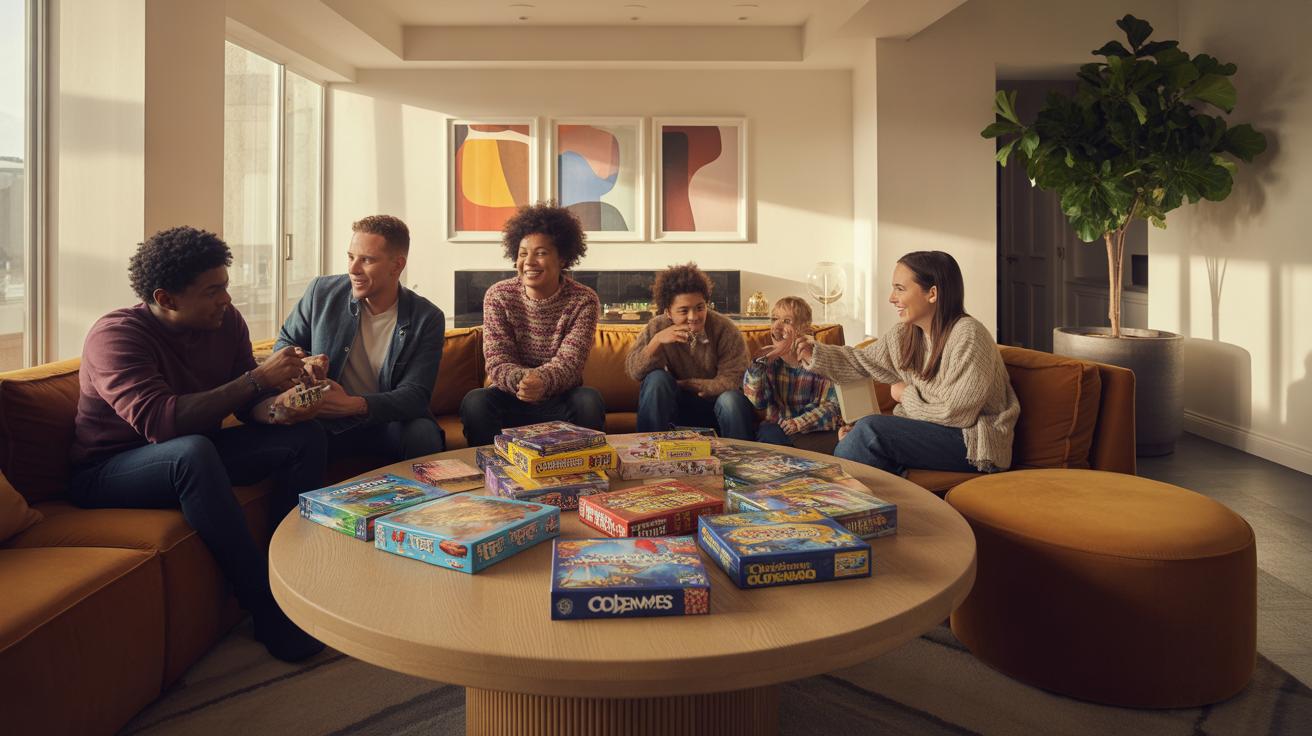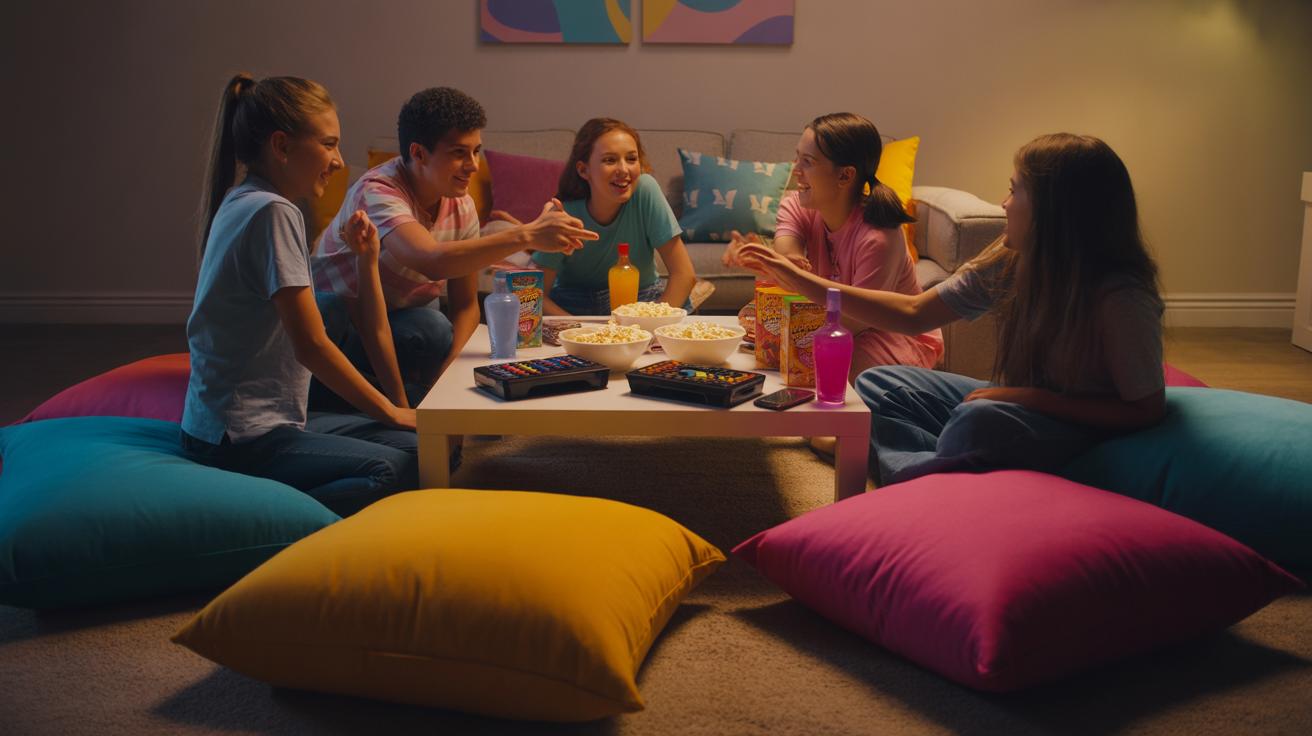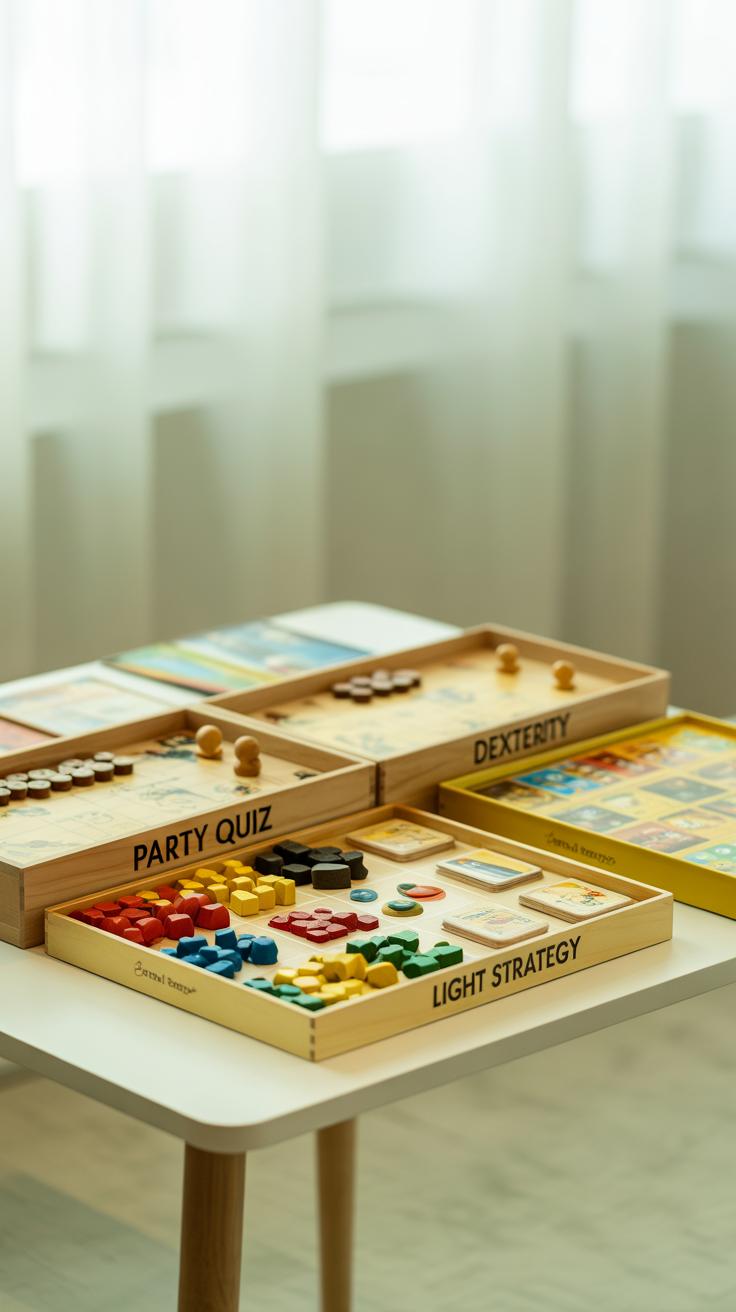Introduction
Games Night Ideas For Every Group offers you ways to bring friends and families together. Games nights are a great way to share fun moments. They help people laugh, talk, and enjoy each other’s company. You can try different games for many people or just a few friends.
Every group is different. What works for one may not work for another. This guide helps you pick games and plan your night to fit your group’s style. Keep reading to find ideas that make your games night special and easy to set up.
Understanding Your Groups Interests
Before you pick games for a night with friends or family, it really helps to get a sense of who will be there. Not just numbers, but who they are. What’s the age range? Are they young, older, or a mix? Do they lean toward strategy, quick laughs, or maybe something more active? Sometimes, asking directly works best. Other times, you might just observe or recall what they’ve enjoyed before. There’s no perfect way, but knowing even a bit can save you from awkward moments or bored faces.
Size Matters for Game Choice
How many people you expect completely shapes what games will work. With a small group, say four to six players, games like Codenames or Ticket to Ride fit well—they offer enough challenge without dragging on. Larger groups open up different possibilities. Party games such as Werewolf or Pictionary shine here, letting more people join simultaneously. But beware: some big group games can lose their spark if the crowd gets too quiet or distracted. On the flip side, trying to force a large, complex board game on five players might drag the pace. Balancing player count with game flow is key.
Age and Interests Guide the Fun
Choosing games that match your group’s age and tastes keeps the energy up. For kids or mixed-age gatherings, simpler games with clear rules and quick rounds are often best—you don’t want to see frustration creeping in. If you’re dealing with gamers or puzzle lovers, deeper strategy or cooperative games offer more engagement. But remember, interests can clash. Some may enjoy competitive card games, while others prefer storytelling or trivia. Sometimes, mixing several game types through the night works better than sticking to one style. Have you ever noticed how a game that seems perfect on paper doesn’t hold people’s attention? That’s the clue to shift gears.
Classic Board Games That Always Work
Some board games just never lose their appeal. Titles like Monopoly, Scrabble, and Clue keep showing up on game night tables for a good reason. They fit different group sizes, ages, and interests without much fuss. Maybe it’s their straightforward goals or the shared memories they bring to the table. Even if players have varied gaming experience, these classics usually make everyone feel included.
What makes these games easy to pick up is their familiar structure. The rules are simple enough to explain quickly, and the gameplay moves at a comfortable pace. You don’t have to spend hours learning or strategizing, which helps when time is limited or some players feel overwhelmed. For instance, Scrabble’s focus on word-building engages both newbies and veterans without much pressure. On the other hand, Monopoly’s mix of luck and choice offers chances for surprise twists and friendly rivalry.
Classic games also often encourage strategic thinking and teamwork, even when they appear straightforward. Take Clue, where players gather clues and deduce information—it demands attention and a bit of logic, but also invites playful accusation and interaction. Or consider Risk, which prompts alliances and negotiation alongside competition. These games balance challenge with fun, fostering light collaboration or healthy rivalry, depending on your group. So, while some might think these games are “old-fashioned,” they still hold plenty of value for bringing people together and sparking quick thinking.
Lively Party Games for Big Groups
When you’ve got a big group, keeping everyone involved can be a bit tricky. That’s why party games that get people moving and interacting work best. Think of games like “Werewolf” or “Charades” – they bring out energy and laughter, and you often end up learning something unexpected about your friends. These games don’t stall or bog down the mood, which is great when you want to keep the night flowing.
Inclusive and Simple Rules
Complex rules can kill the vibe fast, especially with large groups. Simple rules don’t mean boring ones. In fact, the easier the game is to pick up, the more people join in. This keeps the focus on fun, not on figuring out what to do next. When everyone understands the game quickly, there’s less downtime and fewer awkward explanations. It also makes it easier to include folks who aren’t used to playing games regularly.
Games That Spark Laughter and Talk
Games that lead to funny moments or interesting conversations tend to stick in memory longer. “Catch Phrase” or “Pictionary” are great examples — people laugh, guess wildly, and often end up chatting about the crazy clues. These games break the ice and get people talking who might not usually interact. They also let personalities shine through without any pressure, which somehow opens up the room. Ever noticed how a silly guess in a game can turn into a funny story that lasts for weeks? That’s the kind of spark these games create.
Card Games for Quick and Fun Play
Card games are a go-to for a lot of folks when you want something simple but enjoyable. One of the best parts is how easy they are to set up—you usually only need a standard deck of cards, which most people have lying around. A pack of regular cards opens up options for pretty much any group size, whether it’s just a couple of players or half a dozen.
Think about classic games like Rummy or Go Fish; they don’t demand much time or explanation, making them perfect for casual players or those new to card games. But on the flip side, games like Spades or Hearts can add a bit more challenge and strategy if your group is into that.
When it comes to style, card games swing both ways. There are fiercely competitive ones where every player tries to outwit the others, creating a lively and sometimes tense vibe. On the other hand, cooperative card games—though less common with standard decks—can encourage teamwork and shared victories, changing the dynamic completely.
The simple setup and flexible formats can make card games a natural fit if you’re aiming for something that doesn’t take over the night but still gets everyone involved. Plus, you can always tweak rules or mix games up depending on the group’s mood. Have you tried mixing cooperative twists into a normally competitive game? Sometimes it makes for unexpected laughs and keeps the energy just right.
Games for Family Friendly Evenings
When you’re planning a games night that includes both kids and adults, the challenge is finding games that hold everyone’s attention without leaving anyone out. Family-friendly games tend to be simple enough for children to grasp quickly but engaging enough to keep grown-ups interested. Games like “Uno” or “Pictionary” often work well—both encourage creativity and a bit of strategy without overwhelming the younger players.
Other options include cooperative games such as “Forbidden Island” or “Outfoxed,” where everyone works together instead of competing. These kinds of games not only are fun but can subtly build teamwork and communication. I remember my nephew’s eyes lighting up during a cooperative round—it felt like the game was balancing fun and learning perfectly.
Games That All Ages Can Play
Choosing games safe for all ages is key, especially if you want everyone to join in. Here are a few examples that usually fit the bill:
- “Connect Four”: Easy to understand, with quick rounds good for kids and adults alike.
- “Jenga”: Requires steady hands and a bit of risk-taking, which appeals across ages.
- “Charades”: No materials needed, plenty of laughs, and it encourages imagination.
- “Apples to Apples Junior”: A word comparison game that nudges players to think about language and humor.
These games are straightforward but include enough randomness or social elements that keep everyone involved. You might find adults acting more silly than kids sometimes, which is a nice twist.
Balancing Fun and Learning
Family games offer a subtle way to sneak in learning moments while everyone is just trying to have a good time. For example, games like “Guess Who?” develop deductive reasoning without feeling like a lesson. Similarly, “Scrabble Junior” extends vocabulary playfully.
Sometimes, the learning happens through interaction rather than the game itself—kids pick up patience, turn-taking, and even some light math or spelling depending on the game. The important part is that the learning doesn’t dominate the fun. If players notice they’re being “taught,” enthusiasm might drop. So, it’s best when clever games blend those elements effortlessly.
Have you ever watched a quiet child suddenly light up during a tricky game round? Those moments make me think the balance of fun and subtle learning really pays off. It might not be obvious at the time, but these games stick with them in small ways.
Setting Up Your Games Night Space
Creating a good space for your games night can make all the difference. You want a place where everyone feels at ease but also focused enough to dive into the game. Think about seating first: try to arrange chairs so everyone can see each other clearly without having to stretch too far or huddle close. Round tables work great, but if you have a rectangular table, putting people on both sides often works well.
Lighting plays a surprisingly big role too. Bright enough that no one struggles to read cards or notices bits of the board, but not so harsh it feels like an interrogation room. Soft overhead lighting combined with a small lamp can do the trick, especially if your group tends to play into the evening. I’ve noticed that flickering or uneven light can actually distract more than poor lighting, so keep that steady.
As for organizing game materials, keep everything reachable and clearly separated. Having little bowls or trays for tokens, dice, or cards saves a lot of fumbling. If you pile everything in the middle, you risk slowing the game down while someone scrambles for a missing piece. Using ziplock bags or small boxes labeled for different components also helps, especially if you rotate games. Setting this up once before the night starts can save a pile of headaches later. Trust me, a well-ordered space feels smoother, even if the game itself gets wild.
Inviting and Engaging Players
Inviting friends and family to games night can feel straightforward, but it often benefits from a little extra thought. Instead of just tossing out a date, try to tailor your invite to the group’s vibe. Maybe send a casual text to one friend but call another, especially if they seem hesitant about joining. Sometimes, a personal touch—that quick chat about why you think they’d enjoy the night—makes a difference.
To keep everyone involved once the games start, you might want to mix up roles or teams regularly. Switching partners unexpectedly can shake things up and prevent anyone from fading into the background. Also, try opening with a quick, light game that’s simple to understand. That eases players in and breaks the initial silence or awkwardness.
Communicating Game Details Clearly
Before the night, giving guests a heads-up about the games helps build a bit of anticipation. You don’t need to reveal every rule, but a brief overview of what to expect—whether it’s a fast-paced card game or a strategy-heavy board—sets clear expectations. That way, folks don’t arrive unsure or anxious.
Sharing the vibe upfront—such as if the night is more casual or competitive—can also keep surprises at bay. Sometimes I’ve noticed that when people know a game involves teamwork or some bluffing, they can prepare mentally and jump in more confidently. A short list or a few highlights in your message can work well.
Keeping the Energy Up Throughout the Night
Keeping energy high isn’t just about loud enthusiasm. It’s a bit delicate, actually—how do you encourage participation without putting pressure on the quieter players? One way is to invite everyone’s input regularly, like asking for suggestions on the next game or making sure no one’s left waiting too long between turns.
Breaking up longer, more intense games with quicker, lighter ones can help reset the mood. Sometimes people just need a moment to recharge. I’ve also found that having small snacks or drinks handy encourages casual chats and easy, natural breaks from the game itself.
If someone seems shy, try gently involving them with simpler roles at first. Maybe let them be the scorekeeper or the dealer. These small tasks can make participation feel less intimidating, without drawing too much attention.
Mixing Game Types for Variety
Keeping a game night lively can be tricky if you stick to just one style of game. Mixing board games, card games, and party games during the evening can really shake things up. When you switch from a strategic board game to a fast-paced party game, players often perk up a bit, especially if attention seems to be drifting. I’ve noticed this myself—sometimes after an hour of deep strategy, people just want a breather, something lighter and less intense.
Think of your game night like a playlist. Jumping between different “genres” – say, a trivia card game followed by a tactile board game and then a silly party game – can help maintain energy and keep the mood fresh. It’s almost like resetting the mental palate each time. Plus, this variety makes it easier to include everyone because different games appeal to different strengths and interests.
Switching Between Board, Card, and Party Games
Changing game types during the night helps avoid any stagnant phases where players lose focus or enthusiasm. For instance, a long session of a complex board game might tire some players out mentally. Then, switching to a quick, social card game can lighten the vibe and make it easier for everyone to jump back in.
One thing I’ve found useful is watching for signs of waning interest and using that moment to switch gears. It tends to refresh not just the mood but also people’s attention spans. Sometimes, players will even thank you afterwards for breaking up the heavy thinking. Don’t underestimate how much the style and pace of a game can affect how involved people feel.
Balancing Skill and Chance
When you plan your game mix, try to include games that balance skill and luck. If every game feels purely skill-based, some may lose interest because the competition becomes too intense or intimidating. On the other hand, too much luck can feel frustrating for those who like to rely on strategy. It’s tricky, but mixing them keeps things fair and fun.
For example, playing a highly strategic board game followed by a card game that depends a bit more on chance tends to level the playing field. It gives players a chance to shine in different ways and keeps the competition unpredictable. This balance can keep tension in check while still encouraging friendly rivalry—something that’s often missing when a night turns too one-sided.
Dealing With Challenges During Games Night
Handling Rules Conflicts Calmly
Rules disagreements can pop up at any time during a games night. It’s almost inevitable, especially with new or complex games. When this happens, try taking a step back first. Ask everyone to pause and explain their point calmly—sometimes just hearing each other out settles things faster than jumping to command. If the rules booklet isn’t clear, don’t hesitate to look online or check official FAQs right then and there. You might find a quick answer that avoids debate.
If a quick fix isn’t possible, try agreeing on a house rule just for that session. It doesn’t have to be permanent, and you can always vote if people can’t decide. Making the environment more about fun than strict competition helps keep tensions low. Sometimes, reminding the group why you’re all there—to enjoy the evening—can make everyone a bit more flexible.
Adapting Games for Fair Play
Different skill levels in your group can create awkward moments, especially when experienced players dominate new ones. Your goal might be to keep everyone feeling involved without oversimplifying games to the point of boredom for the veterans. One approach is to tweak rules subtly, like giving beginners a small head start or limiting advanced players’ options temporarily. It doesn’t have to be formal—just enough to level the playing field.
Another option is to team up mixed-skill pairs, so less experienced players partner with veterans. This can balance the competition naturally and foster some mentoring. If that’s not possible, consider switching to cooperative games where players work together rather than against each other, which often reduces stress over differences in abilities.
Have you noticed that some groups respond better to flexibility, while others prefer strict rules? It’s fine to experiment here. Sometimes a rule tweak makes the night better; sometimes it ruins the challenge. Reading the room helps, and if you can, ask players for feedback afterward. It might guide your next games night with the same group.
Conclusions
Games nights bring people close. Picking the right games helps everyone have fun. Some like board games, others like party games. You can mix ways to play for more fun. Planning ahead means less stress and more smiles.
Try different games for your group. Notice what works and what doesn’t. Your games night will grow better with time. You create memories, share laughs, and build friendship with simple games. Have fun and enjoy your next games night.

























